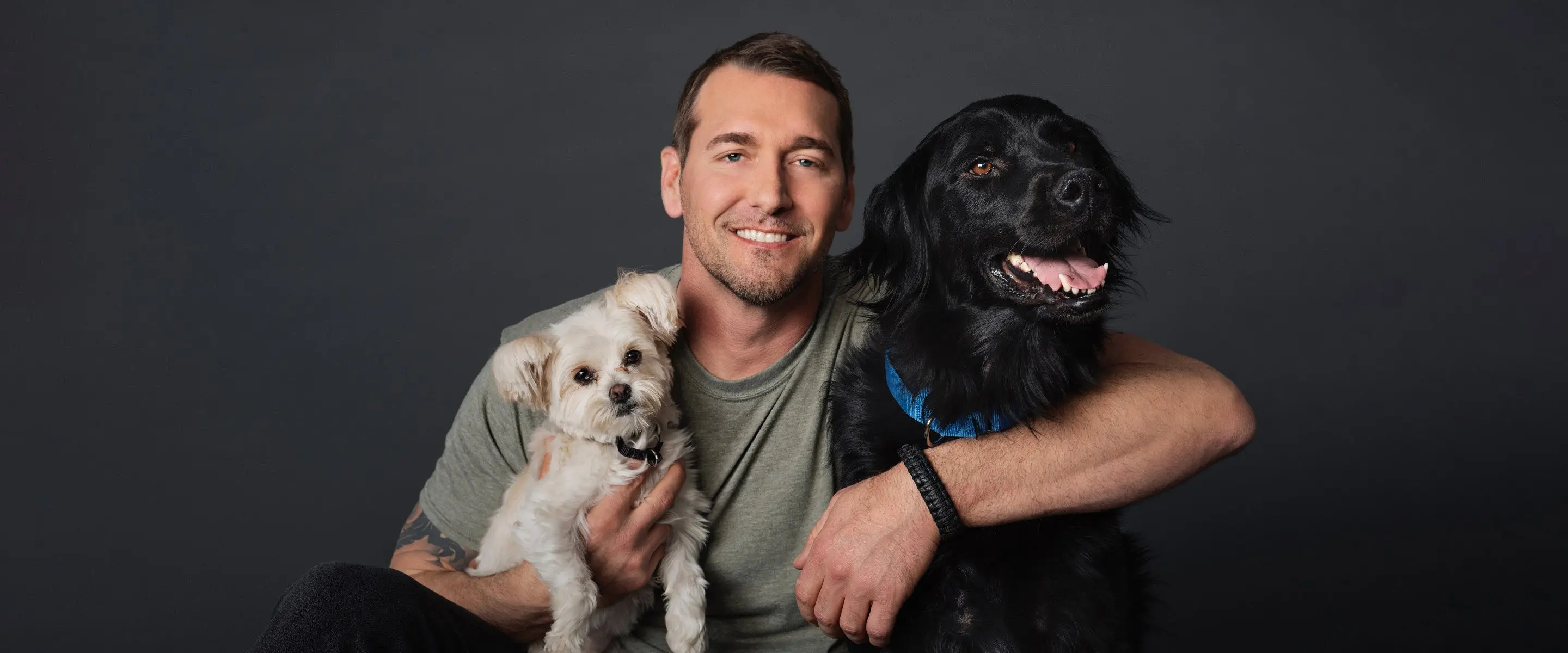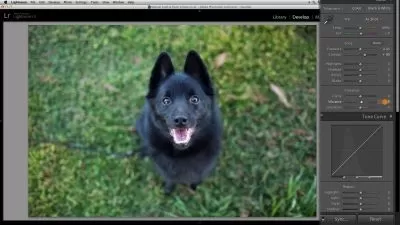Dog Training 101
Jean Donaldson
12:35:34
Description
There are so many books out there about “successful” dog-training techniques, methods, and schools. The amount of information can be overwhelming, and, to make it worse, it’s often contradictory.
Give your dog compliments and positive reinforcement. Show your dog who is boss. Whisper. Talk loudly and sternly. Use clickers. Use your hands. Reward with treats. Never use treats.
We love our dogs and we want to do right by them. While there are numerous benefits to owners in having a well-behaved, obedient dog, there are surprising benefits to the dog as well—one of which is the potential of a significant improvement in both the quality and length of your dog’s life. Good training is enriching, mentally stimulating, and gives them a sense of control over their environment. But how do we know which training path to take when there is so much conflicting advice? How do we make sure we’re not doing more harm than good?
You will come out of this course knowing how to teach your dog the most commonly desired obedience actions; understand the complicated and fascinating world of dog behavior; grasp the fundamentals of dog communication; and have a strong foundation in the principles that underlie modern dog training philosophies. You’ll learn how dogs learn, act, react, and connect, opening the door to better interactions and a new world of trust between you and your dog.
Training by a Trainer
They say if you give a man a fish, he eats for a day, but if you teach a man to fish, he eats for a lifetime. This course teaches you techniques, training you how to train dogs with the basics, but opening doors to train for more advanced behaviors.
The benefits from learning from a trainer of trainers are numerous. Rather than focusing on one training method and hoping for the best, Professor Donaldson has worked with numerous approaches, so she is well aware of the frustrations and concerns that come with the trendy training methods—especially since many of them are based on old “pack status” assumptions that have been debunked. Instead, Professor Donaldson has honed a data-driven technique that has been validated by current behavior science. By taking a holistic approach and grounding her methodology in current research around how dogs think and react, you get a unique and accessible approach that works for both you and your dog.
Professor Donaldson is positive and encouraging, reassuring you the whole time that training may not go perfectly. Some lectures may need to be reviewed and repeated as you learn how best your dog will learn. As a bonus, she also helped create the guidebook for this course, which will give you detailed training plans for all the behaviors once you’ve gone through the course.
Dognition
How animals learn is one of the most studied phenomena in the history of cognitive science, and yet how to apply these learnings is not always clear cut. Much like humans, dogs carry embedded instincts and rich memories—from their evolution and the inherent drive for survival, to getting scolded for something they did but didn’t understand a mere week ago.
As Professor Donaldson notes, when you are training, you need to be cognizant of what came before you. There are “big ticket” action patterns—instinctual behaviors built around fight, flight, feeding, and reproducing—that your dog has inherited for its own survival.
Dogs descended from a wolf-like animal with a standard predatory sequence. Through that sequence, we can recognize behaviors in our modern-day companions:
- Search: Usually olfactory-based, this might involve trailing a prey item for hours or even days. Those neurotic or “OCD” dogs who won’t stop chasing a tennis ball are simply working from hard-wired instincts.
- Stalk: A stealthy approach where the dog remains as close as possible to a prey item to increase the likelihood of acquisition and to reduce the energy expended with chasing. This provides some insight as to why your dog always seems to be under your feet—especially at feeding times.
- Rushing and biting: This is typically not a “go-for-the-throat” approach you might see with big cats who hunt. Group-hunting canids will use rushing and biting to wear a large prey down, which may be why modern dogs sometimes nip.
- Killing and eating: From an evolutionary standpoint, dogs don’t see a massive distinction between beginning to feed and an animal dying—once the prey is no longer fighting or fleeing, eating begins. Therefore, we often see dogs practice the application of a clean dispatch via pressure or the “grab and shake” with toys, ropes, or other items they find.
Modifying these can be difficult and it’s even more frustrating to teach your dog to overcome these instincts altogether, but you can also learn how to use them as a baseline for your training regimen. Professor Donaldson layers in modern psychological practices such as B.F. Skinner’s operant conditioning and Pavlov’s emotional manipulation to build conditioned responses in order to create a positive environment of action and reward, motivating your dog to overcome his instincts and to adopt the behaviors you want to instill.
Sit. Stay. Learn.
In addition to the insights that you’ll gain about how your dog thinks and behaves, you’ll learn practical tips to master the basic obedience practices. Dog Training 101 is rooted with training behaviors “in,” which means instilling behaviors such as:
- sit
- wait
- come
- proper walking on a leash
However, for those of you who have dogs with established bad habits, you’ll also explore training behaviors “out,” which means uprooting unwanted behaviors including:
- chewing (the wrong things)
- eliminating in the wrong places
- excessive barking
- territorialism
Lastly, you’ll learn tips and tricks to help build a sense of trust between you and your dog that will open the door to advanced training techniques and a better relationship. These include:
- heel
- sit pretty
- distance drop
- techniques for sitting during teeth brushing, eye drops, and other care
- crating
Professor Donaldson relies on the human ability to learn through observation and packs the course full of active demonstrations, so you can see how to put the lessons into practice as well as plans you can take with you once you’ve learned the basics of the training.
With Professor Donaldson by your side providing invaluable insights, these step-by-step, field tested training plans will teach you how to become a competent trainer, able to teach any dog—young or old, of any breed or variety—basic obedience, troubleshoot training problems, solve common behavior problems, and more accurately interpret behavior. Once you and your dog have finished this course, you’ll each have a better understanding of and a stronger relationship with your best friend.
More details
User Reviews
Rating
Jean Donaldson
Instructor's CoursesJean Donaldson is the founder and principal instructor of the Academy for Dog Trainers, which has trained and certified more than 700 trainers in evidence-based dog behavior, training, and private behavior counseling since 1999.
Ms. Donaldson is a four-time winner of the Dog Writers Association of America’s Maxwell Medallion. Her books include The Culture Clash; Mine! A Practical Guide to Resource Guarding in Dogs; Fight! A Practical Guide to the Treatment of Dog-Dog Aggression; Dogs Are from Neptune; Oh Behave! Dogs from Pavlov to Premack to Pinker; and Train Your Dog like a Pro.
Born in Montreal, Canada, Ms. Donaldson founded the Montreal Flyball Association and Renaissance Dog Training, the first positive reinforcement-based school and counseling service in the province. Her own dogs and dogs she has trained have earned numerous titles and wins in various competitive dog sports.
While a student, Ms. Donaldson worked as an adoption counselor at the Montreal SPCA (Society for the Prevention of Cruelty to Animals) and later served on its board of directors. Before founding the Academy for Dog Trainers, Jean dealt exclusively with aggression cases for six years. She lives in Oakland, California, with her dog, Brian, adopted in 2015.

The Great Courses
View courses The Great Courses- language english
- Training sessions 24
- duration 12:35:34
- English subtitles has
- Release Date 2023/06/06













